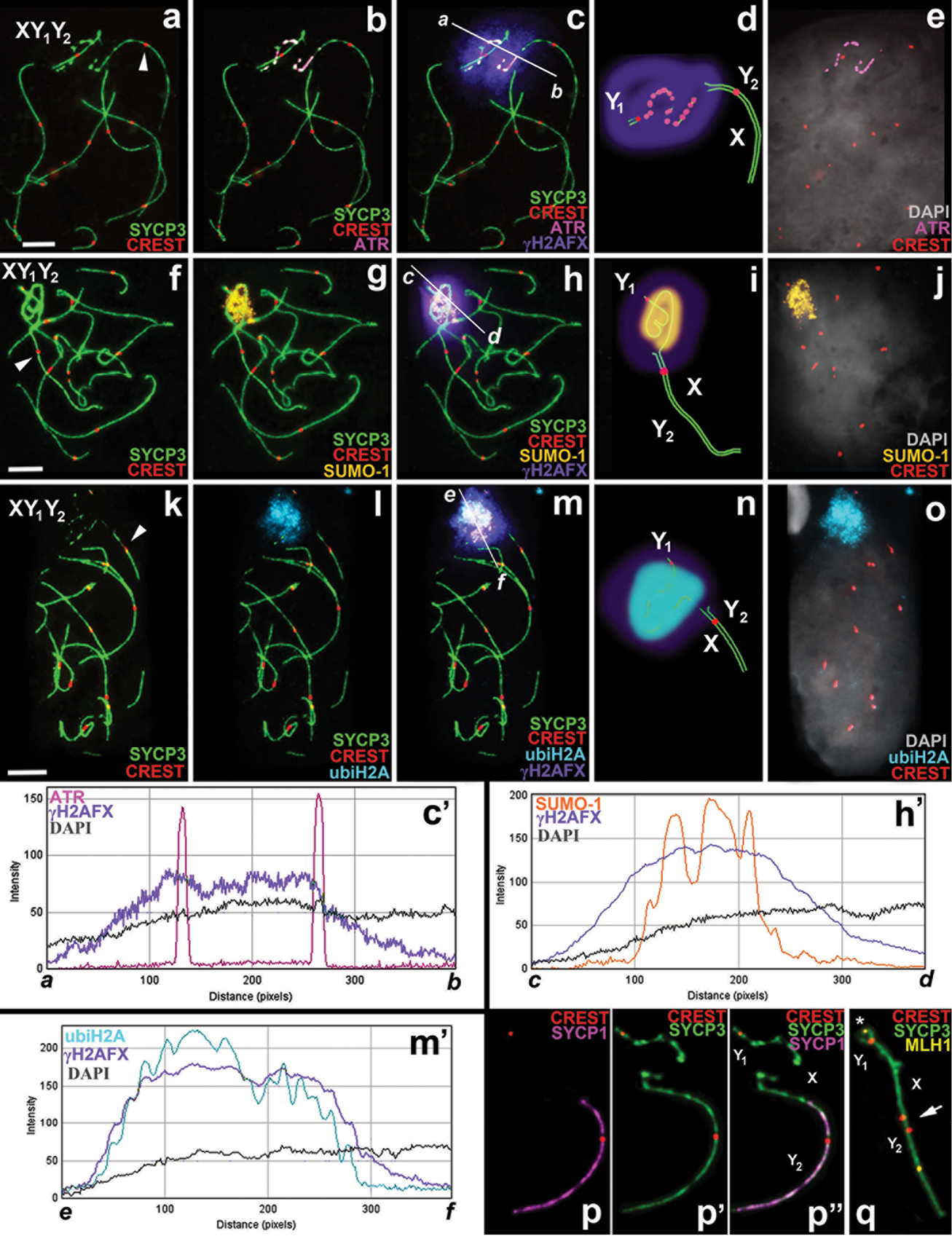
|
||
|
Mid-pachytene spermatocytes and male sex (XY1Y2) chromosomes of Sorex araneus. Bar = 5µm. The axial elements of the SC and the kinetochores were localised using anti-SYCP3 (green) and anti-CREST (red) antibodies, respectively. a–eATR (magenta) has a discontinuous localisation within the chromatin of the true sex chromosome regions (part of the X and the Y1). The co-localisation of ATR, γH2AFX (violet), DAPI (grey) is shown in graph a-b (see c and c’) f–jSUMO-1 (yellow) is localised on the chromatin of true sex chromosome regions. The co-localisation of SUMO-1, γH2AFX (violet) and DAPI (grey) is shown in graph c-d (see h and h’) k–oubiH2A (cyan) is localised on the chromatin of the true sex chromosome regions. The co-localisation of ubiH2A, γH2AFX (violet) and DAPI (grey) is shown in graph e-f (see m and m’) d, i, n Diagrams of the sex trivalents p, p’, p’’ SYCP1 (magenta) is located on the area of chromosome synapsis of the autosomal part of the XY1Y2 (from a-c) q XY1Y2 has two MLH1 signals (yellow). The MLH1 signal within the PAR synaptic site is marked by an asterisk. The arrowhead indicates the centromeres of the autosomal part of sex trivalent (part of the X and the Y2) which are not co-oriented with each other (red). |